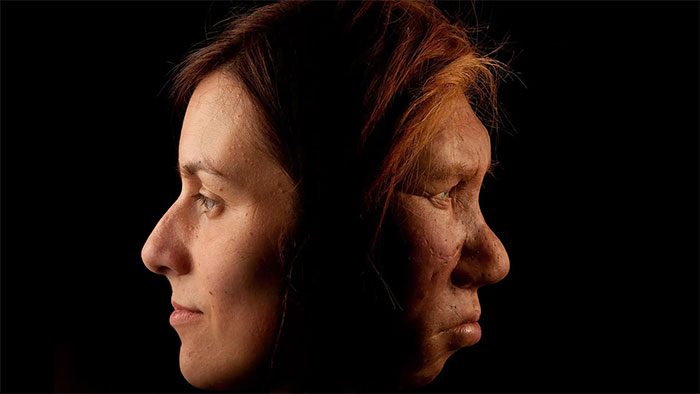A research team from the UK has uncovered an intriguing mystery: While Neanderthals primarily inhabited Europe, why do East Asians carry the most Neanderthal DNA in the world?
Led by ecologist and evolutionary biologist Claudio Quilodrán from the University of Oxford, the study suggests that the history of human migration and evolution may need to be rewritten.
Neanderthals are a distinct species but belong to the same genus, Homo, as modern Homo sapiens. They interbred with migrating Homo sapiens from Africa, resulting in almost all non-African people today having some Neanderthal DNA—an average of 2% of their genomes.

We all have a bit of Neanderthal in our blood – (Graphic: Joe McNally)
Europeans, especially those from Northern Europe, carry a significant amount of Neanderthal DNA because this region was the primary habitat of these ancient humans. However, recent findings reveal an unexpected twist: East Asians possess 8-24% more Neanderthal genes than Europeans.
According to Live Science, Dr. Quilodrán and his colleagues discovered that a wave of farmers migrating from ancient Mesopotamia could explain this seemingly “counterintuitive” phenomenon.
The findings, published in the journal Science Advances, present a much more complex ancient history than previously understood by scientists.
Initially, around 60,000-70,000 years ago, a wave of Homo sapiens migrated from Africa to the rest of the world, becoming the ancestors of the first “hybrid” Homo sapiens – Neanderthals.
While Neanderthals thrived mainly in Europe, they also existed in other regions. Meanwhile, Homo sapiens dispersed across various lands they could reach.
As a result, Neanderthal blood was integrated into modern humans worldwide, ensuring that they never completely vanished, even though they became extinct over 30,000 years ago.
However, another wave of migration from Africa to Europe occurred about 10,000 years ago, altering the landscape. These migrants also interbred with Neanderthals but were more heavily Homo sapiens and represented the group with the least Neanderthal traits globally.
These were the farmers whose ancestors chose to settle in the Middle East and Southwest Asia at the time Homo sapiens began leaving Africa.
This lineage, with fewer Neanderthal traits, diluted the Neanderthal elements in the genes of Europeans.
This conclusion was drawn from examining over 4,400 Homo sapiens genomes, ranging from 40,000 years ago to the present, which had previously been sequenced.
The percentage of Neanderthal DNA in genomes revealed insights into how groups of different species migrated and interbred with one another.
Understanding more about the “hybrid blood” within each of us has significant implications for understanding human evolution, as well as impacting certain medical research, since interspecies genes often bring unique traits that can either increase or decrease the risk of various diseases.


















































